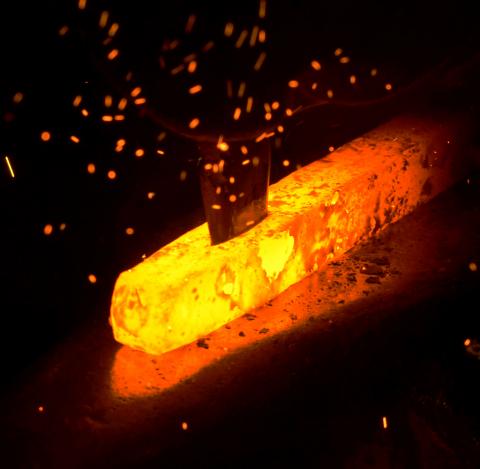Příspěvek experimentální produkce velkomoravských sekyrovitých hřiven k pochopení jejich funkce v raně středověké ekonomice

Autoři
V souvislosti s rostoucím zájmem o problematiku sociopolitické komplexity velkomoravské společnosti se znovu začíná diskutovat i role, kterou v tomto uspořádání hrály tzv. sekyrovité hřivny, prakticky jen obtížně využitelné železné polotovary, jejichž výskyt je jedním z charakteristických symptomů velkomoravského období. Výsledky experimentální rekonstrukce výrobního postupu těchto specifických artefaktů ukazují, že jejich roli nelze redukovat jen na pouhý polotovar, ale je třeba ji uchopit v širších společenských a ekonomických kontextech. Naznačuje to především technologická a ekonomická náročnost celého výrobního procesu, stejně jako fakt, že tvorbě hřivny musela předcházet tvorba jiného, následně mnohem lépe zpracovatelného polotovaru, jehož podoba již nejspíše byla určitou měrou standardizována. Hypotézu provázanosti sekyrovitých hřiven s měrnými, resp. váhovými, standardy podporují i některé dosud blíženezohledněné archeologické, resp. historické analogie.
Contribution to the experimental production of Great-Moravian axe-shaped iron bars to understand their function in the early-medieval economy
In light of the growing interest in the problem of the socio-political complexity of Great-Moravian society, the role of so-called axe-shaped iron bars, barely usable iron semi-products typical of the Great-Moravian era, is being discussed. The results of the experimental reconstruction of the fabrication process of these specific artefacts points to their role not only as mere semi-finished products, but also within the scope of broader social and economic contexts. This is indicated mainly by the technological and economic effort needed for their production, as well as the fact that the fabrication of the axe-shaped bars had to be preceded by the making of another subsequently refined semi-finished product, the form of which was most probably already standardized in a way. The hypothesis of the connection of the axe-shaped iron bars to length or weight standards is supported by certain partly overlooked archaeological and historical analogies.
